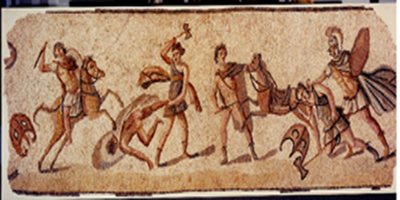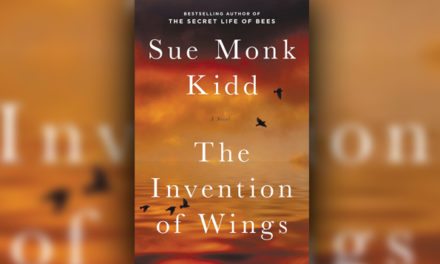There are only two ways the movie “Troy” could have been improved. One, if Brad Pitt had several identical twin brothers. Or two, if the producers had chosen to stay true to the original myth by including the dangerously beautiful, beautifully dangerous Amazonian women that fought fearlessly alongside the Trojans.
Last Friday, the Michael C. Carlos Museum, free to Emory students, hosted a lecture titled “Warrior Women: Amazons in Ancient Greek Art.” The lecture was presented by Bonna Daix Wescoat, professor in the art history department.
To be honest, I’d never been much of an art history person, so I wasn’t sure what to expect when I entered the lecture hall. Soft murmurs of conversation around me ranged from the early history of American art, a neighbor’s security system going off yesterday morning and recent coupon deals. Now and then I would hear a hushed whisper: “I’m so excited for this.” A garden of pearl-grey sculptures surrounded me: casts of lions baring their teeth, intricate floral designs that could have been growing into the wall, scenes of violence and love from ancient histories. Surrounding me were stories with pasts, and now I felt like I was in one, sharing in the legend.
A screen at the front of the room flashed a picture that dominated the topic of the lecture: a third-century Roman mosaic, featuring scenes from the Trojan War. Legend tells that during this war, Menelaus and all of Greece waged war on the Trojans, supported by their Amazon allies, in order to take back the beautiful Helen.
As Jasper Gaunt, curator of Greek and Roman art, said, “The subject matter could hardly be richer; it dives right into the heart of Greek mythology.”
The mosaic displayed on the screen featured a moment in the war that transpired directly outside the great walls of Troy, when Trojan soldiers rushed to aid the Amazonian women, bearing the brunt of the attack against the Greeks. The warrior women in this mosaic are well-armed, gripping their distinctive double-edged battle axes and crescent-shaped shields, beautiful even in the face of defeat.
Wescoat discussed the evolution of the Amazons’ wardrobe, describing how they were initially represented in traditional Greek haplite armor. In the later fifth and sixth centuries, they began to adopt the dress of Thracians and Scythians. I doubt anyone could pull off leather pointed caps, pattern body stockings exposing one breast, richly decorated wool tunics and leather animal skin boots quite as well as they did.
According to legend, Wescoat explained, the Amazons’ prowess in battle was matched only by their beauty (and, apparently, fashion sense). Wescoat said that though the Amazons are not physically monstrous, they are quite conceptually monstrous, because they threaten the ancient Greek very-male concept of the ordered cosmos. She explained further that “their subversion comes not from being women, but in being women who assume the roles of men.”
Wescoat mentioned that Thales, a respected pre-Socratic Greek philosopher, discussed three blessings he was grateful for: “First, that I was born a human being and not one of the brutes; next, that I was born a man and not a woman; thirdly, a Greek and not a barbarian.”
Though this is a polar concept that may be laughably antiquated, it’s striking how prevalent that kind of thinking remains in our society.
As Elizabeth Wallace, a second year Emory Law student, commented after the lecture: “There’s really not that much art or literature which really prominently features females.” Too often, we separate these pieces of history into black and white, straight and gay, men and women. Though this separation is not as obvious now, it’s still an issue that needs to be addressed in our generation, and we can partly assess how we’re doing based on the kind of ideas our art represents.
Another absorbing topic was a scene that also spoke to artists and sculptors of the time period. The scene is captured in a variation of the same Roman mosaic. As the battle rages around them, Achilles lifts Penthesilea – the Amazonian queen – from the ground. Wescoat told how some stories say as he struck the dying blow to her breastplate, he removed her helmet and fell in love with her beauty. On the other hand, some say Penthesilea was already mortally wounded when Achilles arrived.
Thus, the scene captures him searching the battlefield in vain. This tender moment in the face of the chaos and fury of the Trojan War was a favorite among artists, scholars and sculptors.
It’s easy for the average Emory student to brush off such a lecture as distant and inapplicable to his or her life, but this feeling can be solved by simply studying the mosaic a little closer and realizing the fantastic stories spun around a scene frozen in time.
We can all strive to be as passionate and furious in what we do that we occasionally flip a Greek warrior onto his head. We can all try to be as alluring as Penthesilea, winning the greatest Greek warrior of myth over with a single dying glance. We can all appreciate the Amazons for challenging the assumptions and stereotypes of ancient Greek society and inspiring young women to pursue their goals with the same disregard for the status quo. We can all be inspired by the Amazons.
But unfortunately, we can only try to pull off animal print body stockings.
– By Emily Li
Photo courtesy of Michael C. Carlos Museum
The Emory Wheel was founded in 1919 and is currently the only independent, student-run newspaper of Emory University. The Wheel publishes weekly on Wednesdays during the academic year, except during University holidays and scheduled publication intermissions.
The Wheel is financially and editorially independent from the University. All of its content is generated by the Wheel’s more than 100 student staff members and contributing writers, and its printing costs are covered by profits from self-generated advertising sales.







Poop: